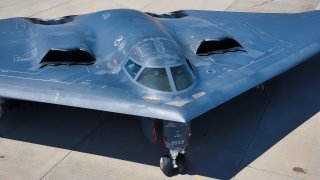Flying Coffins: The 5 Worst Bombers on Planet Earth
While bombers like the B-52 Stratofortress and B-2 Spirit have become legendary, not every bomber design has been a success. Some aircraft, despite high hopes, ended up as failures due to poor design, technical flaws, or simply being ahead of their time.
Summary and Key Points: The bomber emerged in the twentieth century as one of the most feared weapons in the world, evolving from rudimentary beginnings into a technologically sophisticated display of military might.
-While bombers like the B-52 Stratofortress and B-2 Spirit have become legendary, not every bomber design has been a success. Some aircraft, despite high hopes, ended up as failures due to poor design, technical flaws, or simply being ahead of their time.
-Let’s look at some of the worst bombers in history.
The Worst Bombers Ever: The Top 5 List
The bomber emerged in the twentieth century as one of the most feared weapons in the world. The concept didn’t even exist as the century turned, but by the end of World War II, the bomber was one of the primary offensive weapons for the world’s leading militaries. It inspired earned trepidation in the hearts of civilians and the minds of soldiers.
Capable of delivering conventional or nuclear munitions, the bomber progressed from rudimentary beginnings into a technologically sophisticated display of machines featuring every capability from supersonic speed to stealth. Used as a lynchpin to nuclear deterrence, and as an everyday military workhorse, the bomber is foundational to a military strategy.
Still, not every bomber design succeeds. For every superlative airframe like the B-52 Stratofortress or B-2 Spirit, others earn far less admiration.
Let’s consider some of the worst bombers of all time.
Kalinin K-7
Only one Kalinin K-7 was ever built, flying for the first time in 1933. The experimental aircraft was designed with twin booms and large underwing pods that housed fixed landing gear and machine gun turrets. The K-7 was meant to be capable of hauling passengers or bombs. One of the largest pre-jet-era airframes ever built, the K-7 required the power of eight engines, and its wingspan extended an eye-popping 173 feet.
The K-7 only completed seven test flights before a structural failure caused a crash, killing 14 people aboard and one on the ground. The design was abandoned and never flown again.
Tupolev Tu-22
The Tupolev Tu-22 was a medium-range supersonic bomber introduced in 1962. The Tu-22 failed to impress, at a time when the Soviet Union was urgently working to keep pace with American aerospace developments. Unfortunately for the Soviets, the Tu-22 lacked the speed and range required and was riddled with design flaws. The original engine, a VD-7M turbojet, proved especially nettlesome. Many of the accidents involving this aircraft resulted from the Tu-22’s high-swept wings, which were effective at supersonic speeds but caused low lift and poor handling at subsonic speeds
Tu-22 pilots required excellent physical strength just to wrangle the Tu-22 under control, especially when the airframe’s skin overheated during supersonic flight and adversely affected the jet’s flight characteristics.
Blackburn B-26 Botha
Perhaps the worst bomber the Royal Air Force ever flew, the Blackburn B-26 Botha debuted in 1938 and performed poorly from the jump. The airframe was mired with fundamental flaws, including poor longitudinal stability, poor elevator control, and a high stalling speed. If those issues were not enough, the Botha also tended to spew its exhaust fumes into the cockpit.
The Botha was severely underpowered. Two 880-horsepower engines were only capable of propelling the Botha to 220 miles per hour, 15,000 feet of altitude, and 1,270 miles of range.
Designed as a torpedo bomber, the Botha performed so poorly that it was relegated to reconnaissance duty before ever serving a day in its intended role. By the time the Botha was retired, 169 of the airframes had been involved in accidents.
Convair B-58 Hustler
While many of the bombers made this list for their uninspired design and/or poor performance, the Convair B-58 Hustler is an exception. Marking a technological leap, the B-58 came with delta wings, massive engines, and enviable performance ratings. The aggressively swept wings were outfitted with four powerful engines that allowed the B-58 to achieve Mach 2 at high altitude while operating within a range of 3,500 nautical miles.
But the B-58 was notoriously difficult to fly. Relying on specialized systems and complex controls that caused unconventional take-offs, landings, stalls, and spin characteristics, the B-58 was hard to master.
In the 10 years that the U.S. Air Force operated the B-58, 116 airframes were acquired – and 26 were lost to accidents.
Douglas TBD Devastator
You can’t judge an aircraft on cosmetics alone. But sometimes when you look at an aircraft, you know the thing is going to be wonky. The Douglas TBD Devastator didn’t quite look right. Holding a three-man crew sitting back-to-back-to-back beneath a greenhouse canopy, the airframe looked cumbersome, almost comedic. Although a capable torpedo bomber when introduced in 1937, technology progressed so quickly that by the time the U.S. joined World War II, the Devastator was already woefully outdated. Slow and incapable of defending itself, the Devastator struggled to survive in the Mitsubishi Zero-dominated environment of the Pacific Theater. During the Battle of Midway, the Devastator’s last foray into combat, 41 Devastators were deployed. Only four survived.
About the Author: Harrison Kass
Harrison Kass is a defense and national security writer with over 1,000 total pieces on issues involving global affairs. An attorney, pilot, guitarist, and minor pro hockey player, Harrison joined the US Air Force as a Pilot Trainee but was medically discharged. Harrison holds a BA from Lake Forest College, a JD from the University of Oregon, and an MA from New York University. Harrison listens to Dokken.
All images are Creative Commons.


